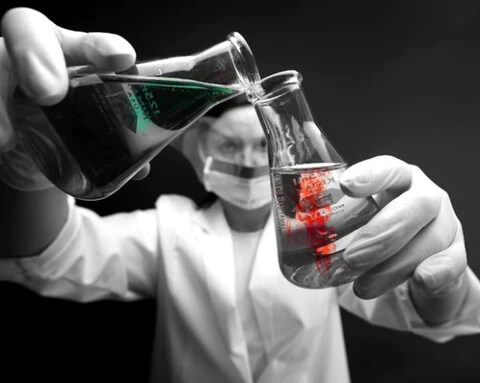E-Liquid Ingredients: A Breakdown
11th Apr 2023
E-Liquid Ingredients
Hello again, dear readers. Today we're going to tackle a topic that's been the subject of mountains of speculation but very little substantial debate – what actually goes into your e-liquid.
You may have heard 'it's just water vapor' as an overly-simplistic explanation of what you're breathing when you vape. By now, hopefully it's clear to most people that, while not entirely inaccurate, this description is lacking in complexity.
Vegetable Glycerin (VG), Propylene Glycol (PG)
There are four main ingredients in your juice, each of which we'll touch on in this piece. They include vegetable glycerin (VG), propylene glycol (PG), liquid nicotine (suspended in either PG or VG), and flavoring.
These days, VG is the dominant ingredient in most liquids. It's a viscous liquid, mostly flavorless but lightly sweet. It's commonly derived from soy or palm, and nearly all VG used in e-liquid is food-grade and certified by representatives of the U.S. Pharmacopeial Convention, or USP. VG is credited for creating the clouds produced by vapor devices, and provides a smooth, clean vape.
PG comprises the second largest component of modern e-liquid. It's slightly thinner than VG, and allows liquid to achieve a consistency compatible with factory-built coils and other setups that can't wick pure VG quickly. While believed to convey flavors better than VG, PG also delivers a bit of bite, or 'throat hit.' PG is also the component referenced when vaping opponents claim your e-juice contains 'antifreeze' – PG is also a non-toxic component added to engine coolant to reduce the toxicity of that fluid in order to avoid poisoning pets who drink the sweet-smelling puddles from leaky cars.
Some liquids will also contain liquid nicotine – while commonly derived from tobacco leaves and stems, nicotine can also be extracted from plants as diverse as broccoli and potatoes. More recently, tobacco-free nicotine, an entirely synthetic substance created in a laboratory and not extracted from any organic matter, has begun to make its way into more recipes. We'll have more on that in an upcoming post. This nicotine is generally delivered to liquid manufacturers suspended in a liquid solution of either PG, VG, or a combination of the two.
Vaping Flavor Extracts
Finally, we have flavor extracts. These run the gamut from naturally-extracted flavors to lab-created flavor substitutes. Most often these flavors are suspended in PG, which makes a true 100% VG liquid difficult to obtain, though some flavor manufacturers like San Diego-based Nude Nicotine are experimenting with VG extractions.
Some flavors, particularly lower-end cooking additives like some of those produced by Lorann (a readily available hobby store brand), are suspended in oil. It's worth a mention here that oil is decidedly unsafe to vape, and no respectable flavor manufacturer would use an extract of this kind in producing e-liquid.
Other brands, though, may use alcohol in the extraction process, and some of that alcohol may remain in the resulting flavoring. This produces a harsh, bitter flavor and is more common with lower-end flavor manufacturers, though the resulting liquid can be rendered vape-able through proper steeping techniques.
Another concern, at least to some, is the presence of diketones in flavor extract. Diketones, including the most-known variant diacetyl, are responsible for producing buttery or creamy notes in artificial flavoring. They're also responsible for the serious, but rare condition known as 'popcorn lung,' which is untreatable. So far, despite diacetyl being commercially available for decades, only one known case of popcorn lung has developed outside of the factories where the chemical is processed and constantly in the air. In that case, the disease presented itself in a Denver man who habitually consumed multiple bags of microwave popcorn each and every day for a period of years.
Still, despite the rarity of the disease to date, vaping diacetyl is an entirely new frontier, one which hasn't been scientifically explored. It's also one of the areas of greatest concern when it comes to validating vaping long-term as an effective harm reducing activity as compared to smoking. If you're concerned about diketones, ask your favorite liquid manufacturers if they use any in producing their eliquid. If they won't answer, or if you're not confident in their response, consider avoiding flavors with overt cream or butter tones in favor of more-benign fruit flavors.

